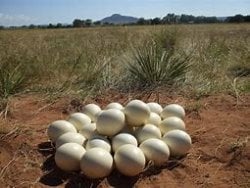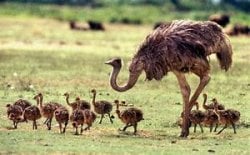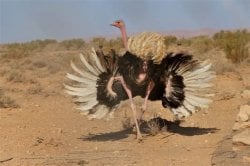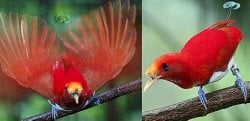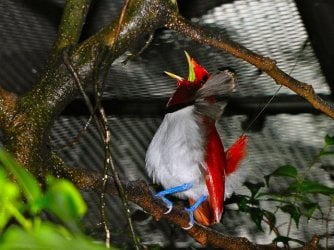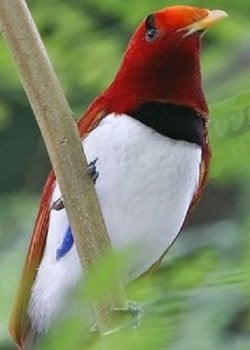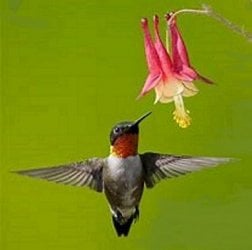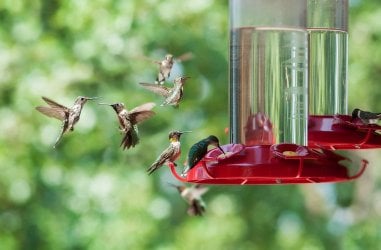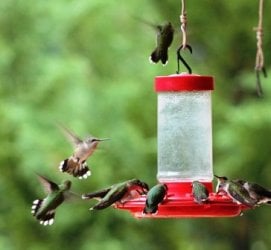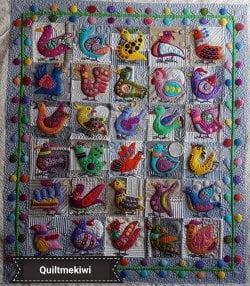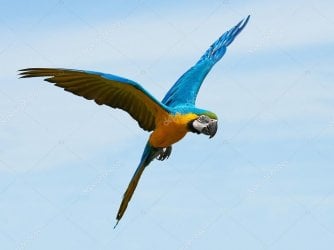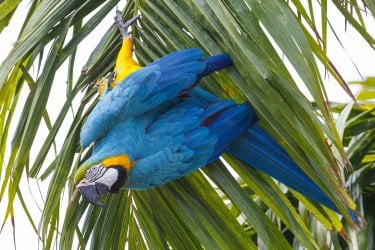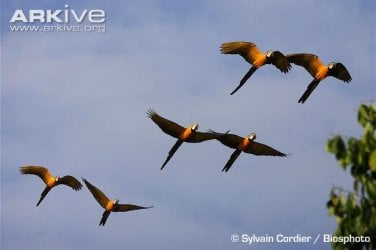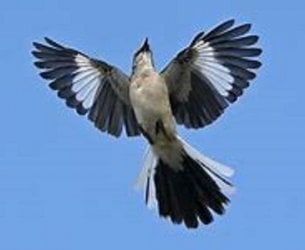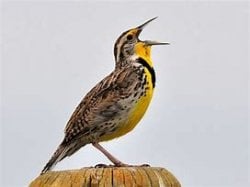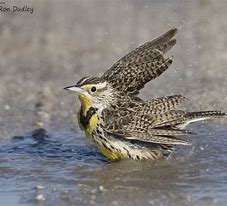Navigation
Install the app
How to install the app on iOS
Follow along with the video below to see how to install our site as a web app on your home screen.
Note: This feature may not be available in some browsers.
More options
You are using an out of date browser. It may not display this or other websites correctly.
You should upgrade or use an alternative browser.
You should upgrade or use an alternative browser.
Wild Side Ornithology Club
- Thread starter freedombecki
- Start date
beautress
Always Faithful
Check it out Becki --- I'm using a recycled 2013 Audubon Songbird calendar and for February it displays a pair of Green Jays

Cyanocorax yncas
Mostly in South America, Mexico and -------------- South Texas!
Cornell All About Birds page: Green Jay Overview
What a feast of color. Do you get to see any where you are?

Cyanocorax yncas
Mostly in South America, Mexico and -------------- South Texas!

Cornell All About Birds page: Green Jay Overview
What a feast of color. Do you get to see any where you are?
Found some really cute pictures of these little harpies...ok, so they're enthusiastic when they speak Black-collared Barbetese to each other …

From Wikipedia: The black-collared barbet usually is about 20–25 cm long, plump-looking and has a large head. It also has the heavy bill fringed with bristles that is characteristic of the genus Lybius.[2] This barbet has a very obvious black collar and head which gives reference to its name. It also has a fire-engine red coloring around the eyes and beak.[3] It has morphologically variable coloring because there is a replacement of a red head with a black head. It also has a more intense color and is larger than other barbets. This bird is also sexually monomorphic, which means that there is generally no phenotypic difference between the males and females of this species. The morphology, size and behavior are basically the same.[4]
The black-collared barbet is one of the many duetting species in the genus Lybius and it regularly uses duetting in its day-to-day life. There are no solitary song instances heard from this species.[5] Also, the repertoire of the duets do not vary greatly.[4] This species is readily recognized by its loud duet, commonly rendered as "too-puddly too-puddly too-puddly" or "too-doodle too-doodle"[5].... accompanied by wing-flicking. In addition to the wing-flicking, the birds in the pair face each other while calling and lean forward while bowing ceremoniously to each other. This bird produces a variety of calls including its snarling warning call and loud buzzing. The snarling could be the initiating sound of the duet.[5]
The "too-puddly" song is actually an antiphonal duet. That means that one bird out of the pair sings the first note, then the other bird in the pair sings the second note. To bystanders, this does not sound like it comes from two different birds.[3] It has distinct sexual duet roles after a greeting ceremony and the partner's notes do differ. The birds do not sing simultaneously, but are synchronized in their duets.[4] The time between when one bird stops singing to when the other bird in the pair picks the song up is called the auditory response time for the duet. The approximate auditory response time for this bird is 178 ms.[5]
This species also incorporates more wing and flight displays into their greeting ceremonies, mating, and territorial displays.[4] It is a gregarious species, often acting in concert when driving off intruders and roosting together (up to 15 recorded) in nest holes. Their flight is direct with a loud whirring of wings. More details are here: Black-collared barbet - Wikipedia
Nature and its diversity--awesome!
Such an outstanding post for its informativity. Had to rate it "Winner" but I wanted to rate it "chicken dinner".
Wait, I'm not sure that came out right for a bird thread but you get the idea.
beautress
Always Faithful
When you hear one, you will know why the Western Meadowlark is the state bird in six states. What can I say? I've lived in two of the states for 5 years or more twice.
My husband bought us 40 acres out in Wyoming that was in the middle of nowhere, except for one fact: several times in the summer almost every year for 44 years, we'd pack a lunch and take off for our land in Rolling Hills, Wyoming (which was surrounded by other vacant 40-acre lots and a couple of neighbors), to see what miniature wild flowers would grow out there, and of course, listen to the state bird trill often while nesting on those sagebrush-covered, weedy arctic desert but idyllic rolling hills... what lovely times, just listening to the birds, while walking fence, when at any time a baby antelope would spring 6 or 8 feet into the air to run helter-skelter from the hiding place its mother had left it. I swear, their little legs were the size of a tinker toy--very slender, but quite powerful enough to project them sky high and running out of reach of their quite stunned, potential enemies. Those were wonderful days. Once I found a two-inch high miniature columbine in full blossom, knowing that the ones up on Casper Mountain would grow to 15 inches high, and the ones in the Rocky Mountains of Colorado were often found on 25" tall clusters with 3-inch narrow blooms.
My husband bought us 40 acres out in Wyoming that was in the middle of nowhere, except for one fact: several times in the summer almost every year for 44 years, we'd pack a lunch and take off for our land in Rolling Hills, Wyoming (which was surrounded by other vacant 40-acre lots and a couple of neighbors), to see what miniature wild flowers would grow out there, and of course, listen to the state bird trill often while nesting on those sagebrush-covered, weedy arctic desert but idyllic rolling hills... what lovely times, just listening to the birds, while walking fence, when at any time a baby antelope would spring 6 or 8 feet into the air to run helter-skelter from the hiding place its mother had left it. I swear, their little legs were the size of a tinker toy--very slender, but quite powerful enough to project them sky high and running out of reach of their quite stunned, potential enemies. Those were wonderful days. Once I found a two-inch high miniature columbine in full blossom, knowing that the ones up on Casper Mountain would grow to 15 inches high, and the ones in the Rocky Mountains of Colorado were often found on 25" tall clusters with 3-inch narrow blooms.
Wild Columbine being pollinated
by a Ruby-throated hummingbird

by a Ruby-throated hummingbird

Attachments
beautress
Always Faithful
Thanks for posting one from 2013. Since I was busy all the year in 2013 trying to make 100 quilt tops in one year for charity, I may have been a little neglectful here. Got 110 quilt tops done, I'm pretty sure, but made the extra 10 quilts just in case I made some unknown error in counting, because just taking on such a marathon in stitches can get intense. Since then, I'm down to 40-60 per annum. I'm working more on the technical end of quilt making--absolutely matched corner, reducing errors in measurement to small, not medium ones. We're talking right on mesurements, not 1/16 off corners where four blocks intersect. Perfection, never. But the 90 degree corners make a great difference.Check it out Becki --- I'm using a recycled 2013 Audubon Songbird calendar and for February it displays a pair of Green Jays

Cyanocorax yncas
Mostly in South America, Mexico and -------------- South Texas!
Cornell All About Birds page: Green Jay Overview
What a feast of color. Do you get to see any where you are?
Thanks for posting one from 2013. Since I was busy all the year in 2013 trying to make 100 quilt tops in one year for charity, I may have been a little neglectful here. Got 110 quilt tops done, I'm pretty sure, but made the extra 10 quilts just in case I made some unknown error in counting, because just taking on such a marathon in stitches can get intense. Since then, I'm down to 40-60 per annum. I'm working more on the technical end of quilt making--absolutely matched corner, reducing errors in measurement to small, not medium ones. We're talking right on mesurements, not 1/16 off corners where four blocks intersect. Perfection, never. But the 90 degree corners make a great difference.Check it out Becki --- I'm using a recycled 2013 Audubon Songbird calendar and for February it displays a pair of Green Jays

Cyanocorax yncas
Mostly in South America, Mexico and -------------- South Texas!
Cornell All About Birds page: Green Jay Overview
What a feast of color. Do you get to see any where you are?
I remember how much quilts, uh, loom in your life

Well I don't do stitching, I do music. So here's a song for you.
Weaver! With your lovers loom
I have seen you by the light of the moon
Winking those eyes of green and gold
Dancing, dancing, dancing
Dancing, dancing, dancing
Down the silver maze of the Milky Way
And all across the heavens
(off topic)I have seen you by the light of the moon
Winking those eyes of green and gold
Dancing, dancing, dancing
Dancing, dancing, dancing
Down the silver maze of the Milky Way
And all across the heavens
beautress
Always Faithful
Thanks, Pogo. Lovely song. Thanks.
I found a really cute bird quilt online (made by someone else). I just try to make geometric, quickie quilt tops pieced for the charity work. Art quilts take longer, but I love them best. Unfortuinately, I've done almost nothing but pieced quilts, many log cabins, rectantle windmill blades, and 9-patch pieced quilts.
You have to click on it to see it. Whoever made it made a beautiful work of art using birds as theme.
I found a really cute bird quilt online (made by someone else). I just try to make geometric, quickie quilt tops pieced for the charity work. Art quilts take longer, but I love them best. Unfortuinately, I've done almost nothing but pieced quilts, many log cabins, rectantle windmill blades, and 9-patch pieced quilts.
You have to click on it to see it. Whoever made it made a beautiful work of art using birds as theme.
Attachments
beautress
Always Faithful
beautress
Always Faithful
According to Wikipedia:
The red-and-green macaw (Ara chloropterus), also known as the green-winged macaw,[2] is a large, mostly-red macaw of the genus Ara.
This is the largest of the genus Ara, widespread in the forests and woodlands of northern and central South America. However, in common with other macaws, in recent years there has been a marked decline in its numbers due to habitat loss and illegal capture for the parrot trade.
Description[edit]
The green-winged macaw can be readily distinguished from the scarlet macaw. While the breast of both birds are bright red, the upper-wing covert feathers of the green-winged macaw is mostly green but can occasionally sport a few yellow feathers above the band of green (as opposed to mostly yellow, or a strong mix of yellow and green in the scarlet macaw). In addition, the green-winged macaw has characteristic red lines around the eyes formed by rows of tiny feathers on the otherwise bare white skin patch; this is one of the biggest differences from a scarlet macaw to the casual viewer. Iridescent teal feathers are surrounded by red on the tail. If seen together, the green-winged macaw is clearly larger than the scarlet macaw as well.
In terms of length, this species is second only in size to the hyacinth macaw, the largest of the macaws. The red-and-green macaw attains a total body length of 90 to 95 cm (35 to 37 in) in adults.[3] Twelve adults were found to average 1,214 g (2.676 lb).[4] A weight range of between 1,050 and 1,708 g (2.315 and 3.765 lb) has been reported.[3] While its weight range is broadly similar to that of the hyacinth, the average weight of the red-and-green macaw is slightly surpassed by both the hyacinth and great green macaws, and amongst all living parrots additionally by the kakapo.[3][4]
Behavior[edit]
The green-winged macaw generally mates for life. The female typically lays two or three eggs in a nest made in a hole in a tree. The female incubates the eggs for about 28 days, and the chicks fledge from the nest about 90 days after hatching.[5]
Re-introduction programme[edit]
Aves Argentinas, a partner of BirdLife International is leading the re-introduction of the species in Argentina. The bird which has not been seen for some years and is listed as critically endangered in Argentina was released in Iberá Provincial Reserve (Spanish: Reserva Provincial Iberá) in the north-eastern province of Corrientes. The birds are from zoos and breeding centres in Argentina and were released in 2015.[6]
Sorry so sleepy. Didn't get much sleep last night due to working on a quilt through the night. It's catch up time, so sayonara till tomorrow.
The red-and-green macaw (Ara chloropterus), also known as the green-winged macaw,[2] is a large, mostly-red macaw of the genus Ara.
This is the largest of the genus Ara, widespread in the forests and woodlands of northern and central South America. However, in common with other macaws, in recent years there has been a marked decline in its numbers due to habitat loss and illegal capture for the parrot trade.
Description[edit]
The green-winged macaw can be readily distinguished from the scarlet macaw. While the breast of both birds are bright red, the upper-wing covert feathers of the green-winged macaw is mostly green but can occasionally sport a few yellow feathers above the band of green (as opposed to mostly yellow, or a strong mix of yellow and green in the scarlet macaw). In addition, the green-winged macaw has characteristic red lines around the eyes formed by rows of tiny feathers on the otherwise bare white skin patch; this is one of the biggest differences from a scarlet macaw to the casual viewer. Iridescent teal feathers are surrounded by red on the tail. If seen together, the green-winged macaw is clearly larger than the scarlet macaw as well.
In terms of length, this species is second only in size to the hyacinth macaw, the largest of the macaws. The red-and-green macaw attains a total body length of 90 to 95 cm (35 to 37 in) in adults.[3] Twelve adults were found to average 1,214 g (2.676 lb).[4] A weight range of between 1,050 and 1,708 g (2.315 and 3.765 lb) has been reported.[3] While its weight range is broadly similar to that of the hyacinth, the average weight of the red-and-green macaw is slightly surpassed by both the hyacinth and great green macaws, and amongst all living parrots additionally by the kakapo.[3][4]
Behavior[edit]
The green-winged macaw generally mates for life. The female typically lays two or three eggs in a nest made in a hole in a tree. The female incubates the eggs for about 28 days, and the chicks fledge from the nest about 90 days after hatching.[5]
Re-introduction programme[edit]
Aves Argentinas, a partner of BirdLife International is leading the re-introduction of the species in Argentina. The bird which has not been seen for some years and is listed as critically endangered in Argentina was released in Iberá Provincial Reserve (Spanish: Reserva Provincial Iberá) in the north-eastern province of Corrientes. The birds are from zoos and breeding centres in Argentina and were released in 2015.[6]
Sorry so sleepy. Didn't get much sleep last night due to working on a quilt through the night. It's catch up time, so sayonara till tomorrow.
beautress
Always Faithful
The blue-and-yellow macaw (Ara ararauna), also known as the blue-and-gold macaw, is a large South American parrot with mostly blue top parts and light orange underparts, with gradient hues of green on top of its head. It is a member of the large group of neotropical parrots known as macaws. It inhabits forest (especially varzea, but also in open sections of terra firme or unflooded forest), woodland and savannah of tropical South America. They are popular in aviculture because of their striking color, ability to talk, ready availability in the marketplace, and close bonding to humans.
These birds can reach a length of 76–86 cm (30–34 in) and weigh 0.900–1.5 kg (2–3 lb), making them some of the larger members of their family. They are vivid in appearance with blue feathers on the top of their wings, torso, and tail—and halfway on top of their head; the other half of the top of their head is covered with gradient hues of green feathers, starting out lime in the front and gradually becoming chartreuse further down. On the bottom of these mentioned areas of their body are light orange feathers. Their beak is black, as well as the feathers under their chin. The face feathers are white, turning pink in excited birds, and lined with small, black striped patterns of feathers around the eyes. The irises are light yellow. Blue-and-yellow macaws live from 30 to 35 years in the wild and reach sexual maturity between the ages of 3 and 6 years.[4]
Little variation in plumage is seen across the range. Some birds have a more orange or "butterscotch" underside color, particularly on the breast. This was often seen in Trinidad birds and others of the Caribbean area. The blue-and-yellow macaw uses its powerful beak for breaking nutshells, and for climbing up and hanging from trees.[4]
Distribution and habitat
This species occurs in Venezuela, Peru, Brazil, Bolivia, and Paraguay. The range extends slightly into Central America, where it is restricted to Panama. Although they were nearly wiped out in Trinidad due to human activity during the 1970s, a recent programme of reintroduction has proved successful. Between 1999 and 2003, wild-caught blue-and-gold macaws were translocated from Guyana to Trinidad, in an attempt to re-establish the species in a protected area around Nariva swamp. A small breeding population descended from introduced birds is found in Puerto Rico,[1] and another has inhabited Miami-Dade County, Florida, since the mid-1980s.[5]
Breeding
he blue-and-yellow macaw generally mates for life. They nest almost exclusively in dead palms and most nests are in Mauritia flexuosa palms.The female typically lays two or three eggs. The female incubates the eggs for about 28 days. One chick is dominant and gets most of the food; the others perish in the nest. Chicks fledge from the nest about 97 days after hatching. The male bird's color signals readiness for breeding. The brighter and bolder the colors, the better the chance of getting a mate.[6]
Conservation and threats[edit]
The blue-and-yellow macaw is on the verge of being extirpated in Paraguay, but it still remains widespread and fairly common in a large part of mainland South America. The species is therefore listed as Least Concern by BirdLife International. It is listed on CITES Appendix II, trade restricted.[1]
Aviculture[edit]
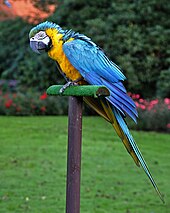
At Walsrode Bird Park, Germany
Even well-tended blue-and-yellow macaws are known to "scream" for attention, and make other loud noises. Loud vocalizations, especially "flock calls", and destructive chewing are natural parts of their behavior and should be expected in captivity. Due to their large size, they also require plentiful space in which to fly around. According to World Parrot Trust, an enclosure for a blue-and-yellow macaw should, if possible, be at least 15 m (50 ft) in length.[7] Captive macaws, kept with good diet, exercise, and veterinary care have been recorded to live 60 or more years.[8] People considering a macaw as a companion parrot must be aware of this and consider that the bird may outlive the owner.
These birds can reach a length of 76–86 cm (30–34 in) and weigh 0.900–1.5 kg (2–3 lb), making them some of the larger members of their family. They are vivid in appearance with blue feathers on the top of their wings, torso, and tail—and halfway on top of their head; the other half of the top of their head is covered with gradient hues of green feathers, starting out lime in the front and gradually becoming chartreuse further down. On the bottom of these mentioned areas of their body are light orange feathers. Their beak is black, as well as the feathers under their chin. The face feathers are white, turning pink in excited birds, and lined with small, black striped patterns of feathers around the eyes. The irises are light yellow. Blue-and-yellow macaws live from 30 to 35 years in the wild and reach sexual maturity between the ages of 3 and 6 years.[4]
Little variation in plumage is seen across the range. Some birds have a more orange or "butterscotch" underside color, particularly on the breast. This was often seen in Trinidad birds and others of the Caribbean area. The blue-and-yellow macaw uses its powerful beak for breaking nutshells, and for climbing up and hanging from trees.[4]
Distribution and habitat
This species occurs in Venezuela, Peru, Brazil, Bolivia, and Paraguay. The range extends slightly into Central America, where it is restricted to Panama. Although they were nearly wiped out in Trinidad due to human activity during the 1970s, a recent programme of reintroduction has proved successful. Between 1999 and 2003, wild-caught blue-and-gold macaws were translocated from Guyana to Trinidad, in an attempt to re-establish the species in a protected area around Nariva swamp. A small breeding population descended from introduced birds is found in Puerto Rico,[1] and another has inhabited Miami-Dade County, Florida, since the mid-1980s.[5]
Breeding
he blue-and-yellow macaw generally mates for life. They nest almost exclusively in dead palms and most nests are in Mauritia flexuosa palms.The female typically lays two or three eggs. The female incubates the eggs for about 28 days. One chick is dominant and gets most of the food; the others perish in the nest. Chicks fledge from the nest about 97 days after hatching. The male bird's color signals readiness for breeding. The brighter and bolder the colors, the better the chance of getting a mate.[6]
Conservation and threats[edit]
The blue-and-yellow macaw is on the verge of being extirpated in Paraguay, but it still remains widespread and fairly common in a large part of mainland South America. The species is therefore listed as Least Concern by BirdLife International. It is listed on CITES Appendix II, trade restricted.[1]
Aviculture[edit]

At Walsrode Bird Park, Germany
Even well-tended blue-and-yellow macaws are known to "scream" for attention, and make other loud noises. Loud vocalizations, especially "flock calls", and destructive chewing are natural parts of their behavior and should be expected in captivity. Due to their large size, they also require plentiful space in which to fly around. According to World Parrot Trust, an enclosure for a blue-and-yellow macaw should, if possible, be at least 15 m (50 ft) in length.[7] Captive macaws, kept with good diet, exercise, and veterinary care have been recorded to live 60 or more years.[8] People considering a macaw as a companion parrot must be aware of this and consider that the bird may outlive the owner.
Attachments
beautress
Always Faithful
From Wikipedia: Peruvian pelican - Wikipedia
The Peruvian pelican (Pelecanus thagus) is a member of the pelican family. It lives on the west coast of South America, breeding in loose colonies from about 33.5° in central Chile to Piura in northern Peru, and occurring as a visitor in southern Chile and Ecuador.[2]
These birds are dark in colour with a white stripe from the top of the bill up to the crown and down the sides of the neck. They have long tufted feathers on the top of their heads. It was previously considered a subspecies of the brown pelican (Pelecanus occidentalis). The Peruvian pelican is considerably larger, ranging from about 5 to 7 kg (11–15 lb) in weight, 137 to 152 cm (4.5–5.0 ft) in length and with a wingspan of about 228 cm (7.5 ft).[2] Compared to the brown pelican, it also has proportionally longer crest feathers, as well as differences in the colours of the gular pouch, beak, scapulars and greater wing coverts.[2]
The main breeding season occurs from September to March. Clutch size is usually two or three eggs. Eggs are incubated for approximately 4 to 5 weeks, with the rearing period lasting about 3 months.
This bird feeds on several species of fish. Unlike the brown pelican, it never dives from a great height to catch it food, instead diving from a shallow height or feeding while swimming on the surface.[3] On occasion it may take other food items, such as nestling of imperial shags, young Peruvian diving petrels, gray gulls and cannibalize unrelated chicks its own species.[4][5]
Its status was first evaluated for the IUCN Red List in 2008, being listed as Near threatened.[6]




These birds are dark in colour with a white stripe from the top of the bill up to the crown and down the sides of the neck. They have long tufted feathers on the top of their heads. It was previously considered a subspecies of the brown pelican (Pelecanus occidentalis). The Peruvian pelican is considerably larger, ranging from about 5 to 7 kg (11–15 lb) in weight, 137 to 152 cm (4.5–5.0 ft) in length and with a wingspan of about 228 cm (7.5 ft).[2] Compared to the brown pelican, it also has proportionally longer crest feathers, as well as differences in the colours of the gular pouch, beak, scapulars and greater wing coverts.[2]
The main breeding season occurs from September to March. Clutch size is usually two or three eggs. Eggs are incubated for approximately 4 to 5 weeks, with the rearing period lasting about 3 months.
This bird feeds on several species of fish. Unlike the brown pelican, it never dives from a great height to catch it food, instead diving from a shallow height or feeding while swimming on the surface.[3] On occasion it may take other food items, such as nestling of imperial shags, young Peruvian diving petrels, gray gulls and cannibalize unrelated chicks its own species.[4][5]
Its status was first evaluated for the IUCN Red List in 2008, being listed as Near threatened.[6]
beautress
Always Faithful
Greeted by friendly grackles at Walmart this am!


beautress
Always Faithful
Found this around the internet when I went searching...

beautress
Always Faithful
beautress
Always Faithful
Several states have the same state birds as other. In popularity, three states together have 18 states enjoying title of State Bird for these three species of wonderful winged wild avians. Second-place most popular is the western meadowlark, claimed by 6 states--Kansas, Montana, Nebraska, North Dakota, Oregon, and Wyoming..

Attachments
beautress
Always Faithful
02.17.2019
Victoria Crowned-Pigeon
Victoria Crowned-Pigeon
beautress
Always Faithful
Conservation of Avians is important as this will show:
beautress
Always Faithful
File:Black-browed Albatross, Beagle Channel.jpg - Wikipedia
Black-browed Albatross can be found in Patagonia, Argentina in frigid water areas.
Black-browed Albatross can be found in Patagonia, Argentina in frigid water areas.
Similar threads
- Replies
- 34
- Views
- 1K
- Replies
- 35
- Views
- 565
- Replies
- 4
- Views
- 89
- Replies
- 22
- Views
- 410
- Replies
- 7
- Views
- 243
Latest Discussions
- Replies
- 341
- Views
- 2K
- Replies
- 8
- Views
- 25
- Replies
- 95
- Views
- 632
- Replies
- 27
- Views
- 137
Forum List
-
-
-
-
-
Political Satire 8545
-
-
-
-
-
-
-
-
-
-
-
-
-
-
-
-
-
-
-
ObamaCare 781
-
-
-
-
-
-
-
-
-
-
-
Member Usernotes 485
-
-
-
-
-
-
-
-
-
-

